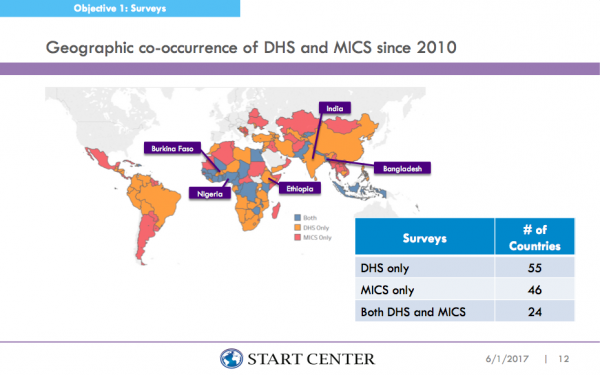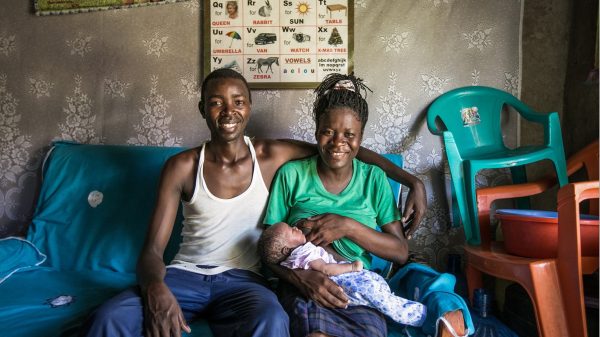
The Data, Analytics, and Evidence (DAE) initiative of the Nutrition Strategy at the Bill & Melinda Gates Foundation (BMGF) seeks to improve global nutrition by strengthening country data and information systems. The BMGF approached the START Center to (1) review and compare nutrition data and indicators collected from large household surveys, (2) identify descriptions of the collection of nutrition data in country-owned health management information systems, particularly the DHIS2, in published and grey literature, and (3) review and compare global nutrition databases. The START team reviewed the Demographic Health Survey (DHS), Multiple Indicator Cluster Survey (MICS), Living Standard Measurement Study (LSMS), and the Standardized Monitoring and Assessment of Relief and Transition (SMART) survey and conducted an in-depth comparison of nutrition indicators from the DHS and MICS. They reviewed literature and interviewed in-country informants to gather information about the use of health information systems to collect nutrition data. Fourteen publically available, web-based, global databases were reviewed for content, user-friendliness, and accessibility.
The START team found that there has been an effort to align nutrition indicators, specifically with the DHS and MICS, though nuanced differences in both reporting and measurement were identified, which could have the potential to impact public health decision-making. Additionally, there was a lack of regularly collected information on nutrition program and intervention coverage, a potential area for expansion. DHIS2 was found to be a readily available platform for the storage and management of routine aggregated nutrition surveillance data, but collaboration between implementing parties and political will were identified as key to the success of implementing such a system. Databases varied in data availability, scope, and user-friendliness. The most user-friendly options included the World Bank’s HNP Dashboards and UNICEF’s Nutrition Landscape Information System. Details of the methodology and results can be found in the final report.





